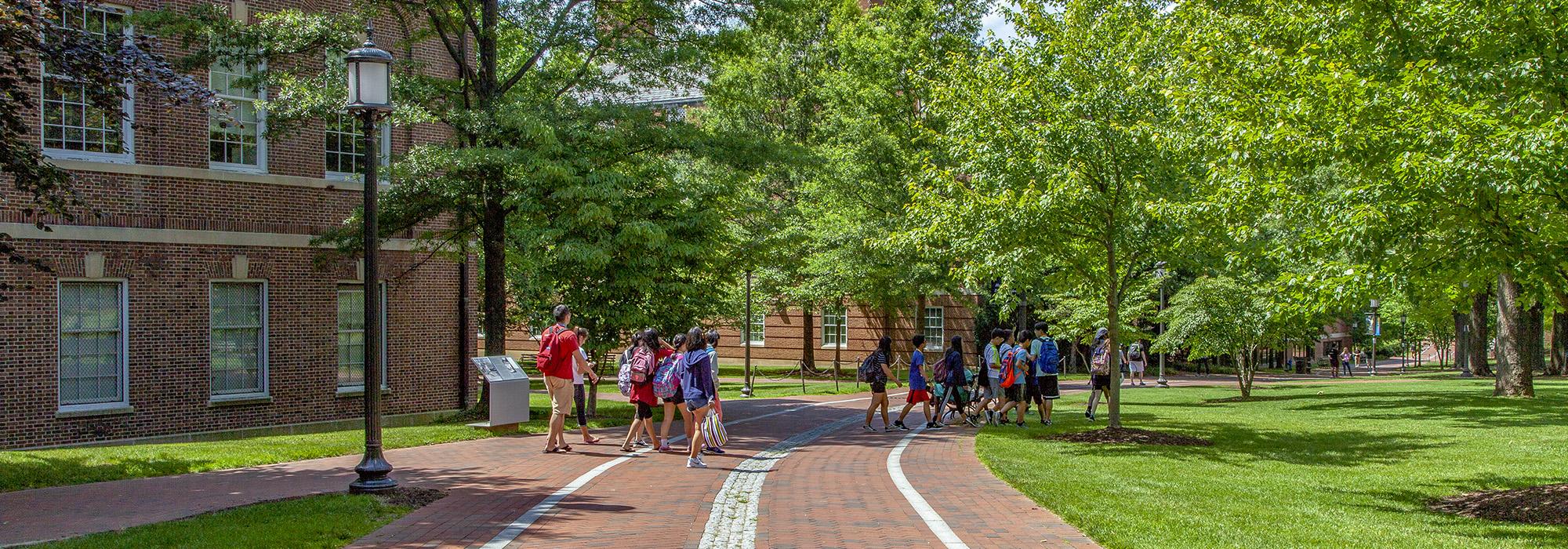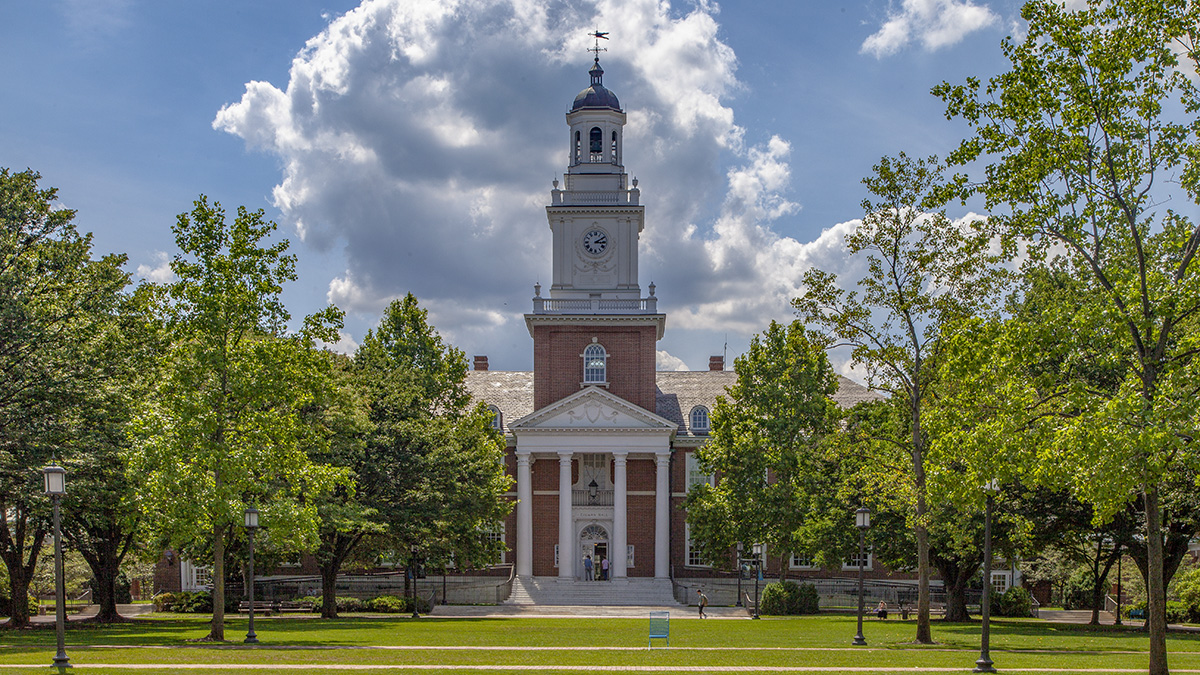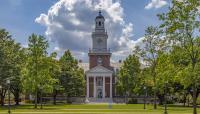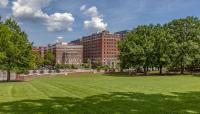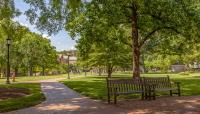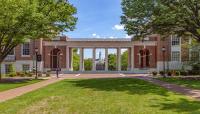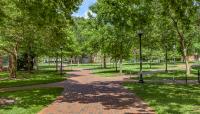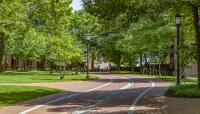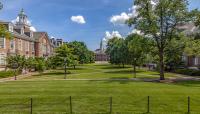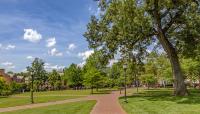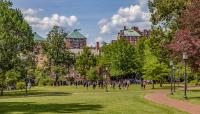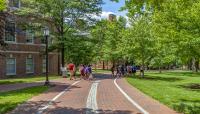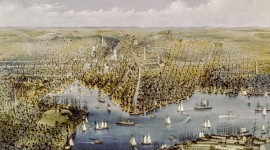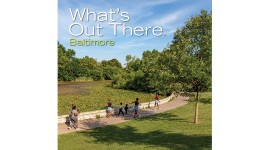Landscape Information
This 140-acre campus incorporates the 120-acre Homewood estate, established by Charles Carroll, Jr., in 1802 and acquired by the Wyman family in 1839. The institution was founded in 1876 in the Mount Vernon neighborhood and by 1894 required room for expansion. University board member William Wyman, then-owner of Homewood, partnered with his cousin William Keyser to reassemble the divided estate, which was then given to the university in 1902. In 1904 an advisory committee that included Frederick Law Olmsted, Jr., selected the architecture firm Parker and Thomas to design the new campus. Warren Manning submitted early planting plans, and in 1914 the Parker and Thomas plan was realized. From 1905 to 1917 Olmsted Brothers prepared myriad plans, designing two original quadrangles and the grading around academic buildings.
The original core of the campus was laid out in a ‘T’ comprising two adjacent, perpendicular quadrangles, crossed sparingly by walking paths and framed by Federalist-style buildings. Keyser Quadrangle (constituting the shorter, east-west axis) is bordered on the west by Gilman Hall, the university’s first academic building, completed in 1915. Canopy trees line the quadrangle, framing views of the stately building. A brick-paved plaza connects the Keyser Quadrangle to Wyman Quadrangle (forming the longer, north-south axis) to the south. A circular drive marks the primary entrance to the campus from North Charles Street, passing the former Carroll residence, Homewood House (now a museum and National Historic Landmark).
Subsequent growth included a cluster of academic buildings directly to the north, Decker Quadrangle to the west; Freshman Quadrangle to the northeast; and Decker Gardens to the northwest.
In the early 2000s Ayers Saint Gross and Michael Vergason Landscape Architects prepared master plans that guided campus improvements, including the conversion of many paved roads to brick walkways and rehabilitation of the original entrance circle.



